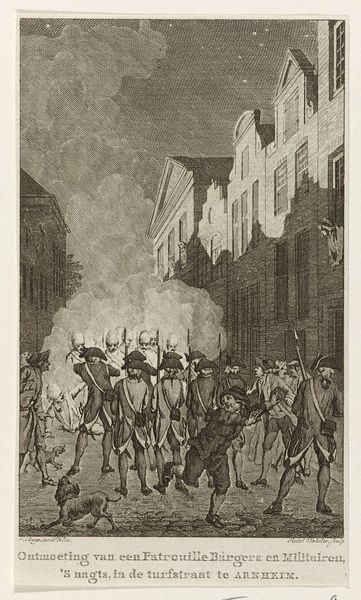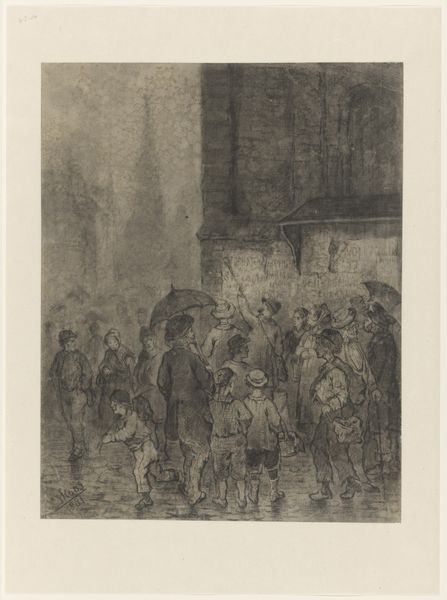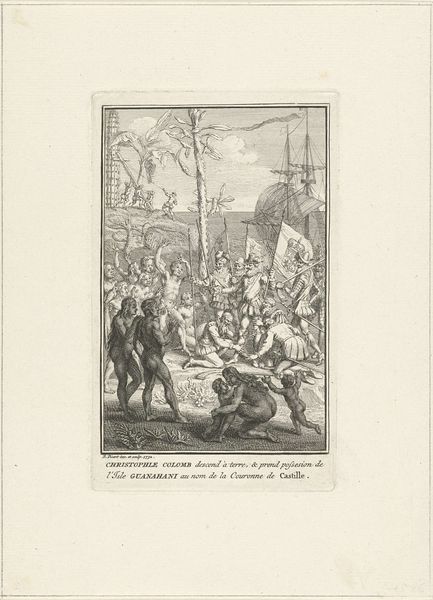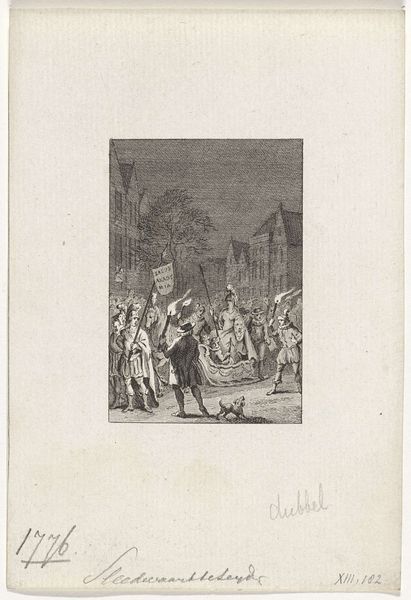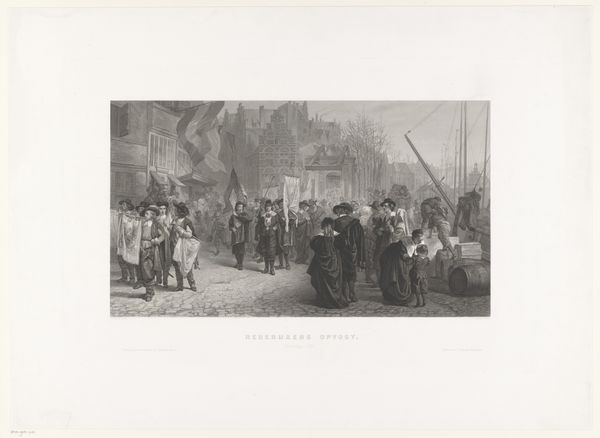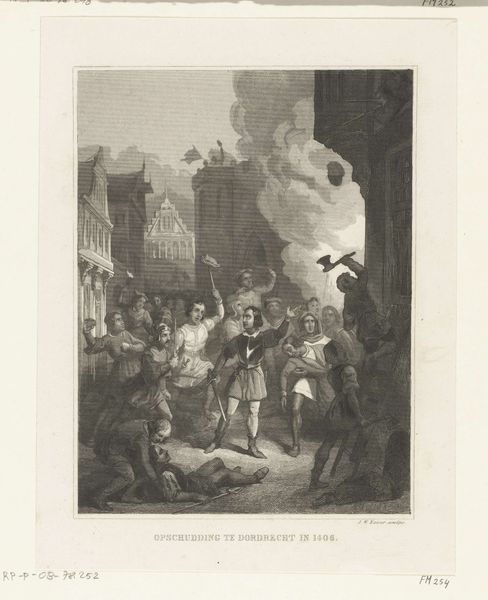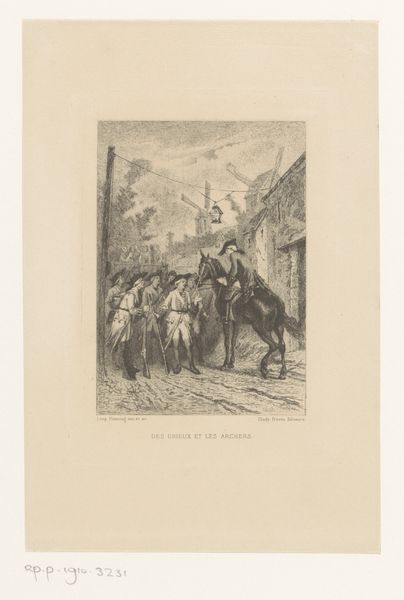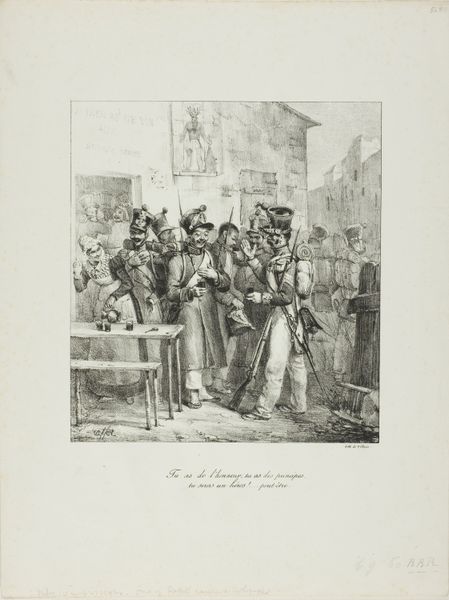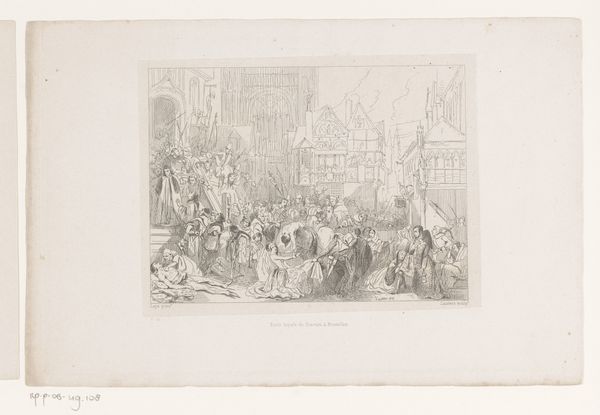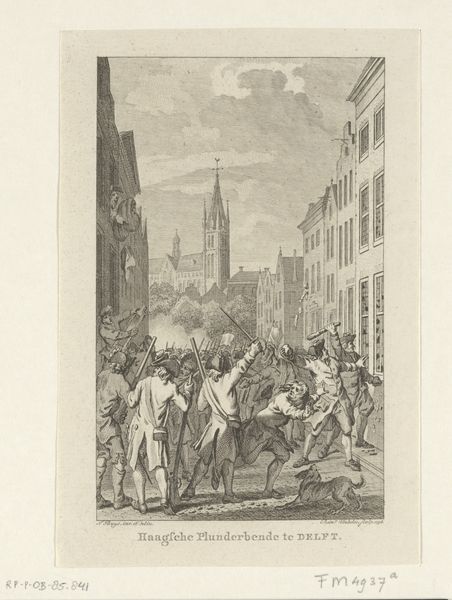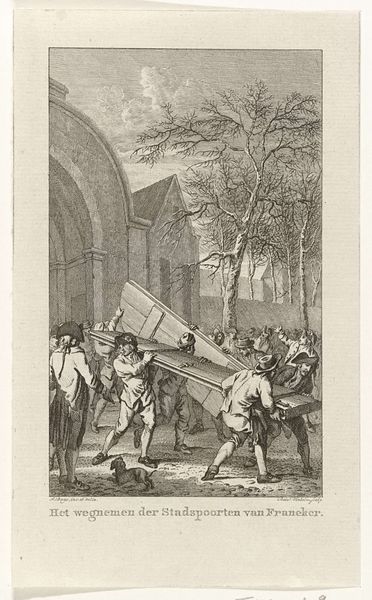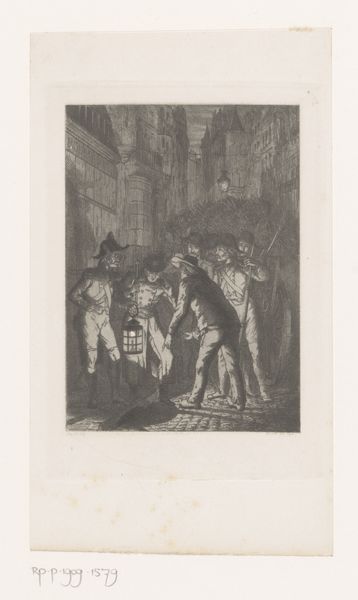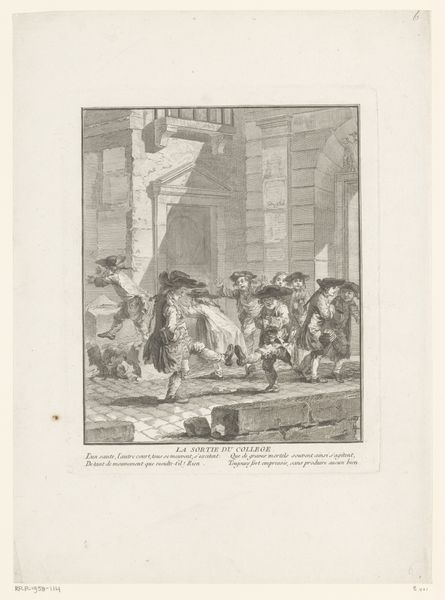
Confrontatie tussen burgerpatrouille en militaire patrouille te Arnhem, 1784 1788 - 1790
0:00
0:00
reiniervinkeles
Rijksmuseum
print, engraving
#
neoclacissism
# print
#
old engraving style
#
cityscape
#
history-painting
#
engraving
#
realism
Dimensions: height 167 mm, width 106 mm
Copyright: Rijks Museum: Open Domain
Editor: So, this is “Confrontation between citizen patrol and military patrol in Arnhem, 1784,” an engraving by Reinier Vinkeles, dating from between 1788 and 1790. The figures seem caught in a moment of intense anxiety, a prelude to conflict. How do you read this image? Curator: It's fascinating how Vinkeles captures a flashpoint in Dutch history through the lens of social tension. Consider the context: This print visualizes the Patriot movement clashing with the established order represented by the military. Editor: So it's not just a street scene, but a politically charged depiction? Curator: Precisely! Look at how the artist differentiates the two groups. The citizen patrol seems more dishevelled, less formally dressed, hinting at their grassroots nature. They’re defending their city, embodying emergent democratic ideals. While the military patrol looks aligned with more rigid, almost dehumanized by authority. Vinkeles implicitly questions power dynamics here. Who is the legitimate representative of the people's interests? Editor: I see. So the seemingly simple depiction is laden with ideological tensions concerning social hierarchy and governance. Curator: Absolutely. And that street becomes a stage for a struggle of autonomy versus authority. Note the realism, too. It brings what was then contemporary events directly into the public eye. Editor: It really makes you consider the power of print as a form of visual activism. I initially just saw the conflict, but now I see how the artist embedded so much political commentary. Curator: That's the beauty of art! It holds layers of meaning that resonate with us even centuries later as long as we see history in relation to the artwork, and vice-versa.
Comments
No comments
Be the first to comment and join the conversation on the ultimate creative platform.
